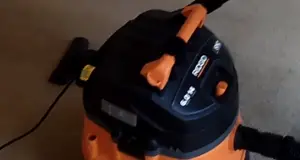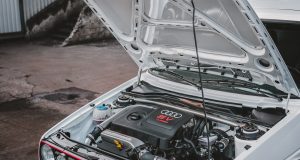Vacuum ovens are very flexible pieces of equipment that find use in scientific research, engineering, and manufacturing. A vacuum oven is typically used for sensitive drying operations like drying small components or eliminating volatile liquids.
In addition, the low-pressure atmosphere reduces oxidation while drying. A typical vacuum oven may reach temperatures ranging from 200°C to 250°C. Look for a tough, high-quality pressure chamber, gasket seals, and pump, as well as easy, programmable controls and a computer interface.
Vacuum ovens with particular features such as solvent recovery or residual gas analysis are also offered to prevent over-drying. Look for a safe vacuum oven that has been certified for these sorts of applications for drying flammable liquids.
How Do Vacuum Ovens Work
Vacuum ovens are used to remove moisture, gas, and potentially volatile compounds while avoiding reactions. They are frequently employed as the last stage in the manufacturing process for implanted medical devices, semiconductors, epoxies, essential oils, and a variety of packaged food goods.
Drying things in a vacuum oven eliminates oxidation, dries delicate products uniformly and softly, and decreases the danger of personnel being exposed to hazardous chemicals (because evaporated fluids are stored).
Vacuum ovens are so named because they heat items like an oven while also creating a vacuum-sealed compartment. The vacuum chamber is the principal mechanism for drying in a vacuum oven. The vacuum chamber lowers the pressure, which lowers the boiling point of most substances.
This enables vacuum ovens to evaporate undesirable components from their samples without causing them to burn. This phenomenon is comparable to how the boiling point of water decreases as elevation increases.
What Are Vacuum Ovens Used For
Vacuum ovens are used in the electronics sector to dry devices and cure printed circuit board coatings. Because the polymers used for PCBs are often heat-sensitive, they are prone to warping.
Vacuum processing enables electronics producers to avoid warping and reduce the time necessary to bring their products to market.
A vacuum oven may also be beneficial to dry cellphones that have been dumped in liquid without shorting out the circuitry, as well as to dry watches with water beneath their lenses.
Vacuum ovens are helpful in the medical sector to eliminate substances that can be harmful inside the human body. This is especially important for implanted medical equipment such as pacemakers, prosthetic heart valves and joints, and catheters.
Heat exposures can destroy these gadgets. Or it can either transport hazardous substances if not vacuum processed.
Vacuum and lab ovens are used in the aerospace industry to mimic how a gadget would respond in the extreme vacuum environment of space. Almost everything that travels into space is subjected to vacuum processing.
Materials on a spaceship are prone to evaporation, which can allow compounds from different materials to bind in the air.
This can be hazardous to human passengers and, in severe instances, can result in power outages and fires. Space flight would be extremely unstable and unsafe without vacuum processing.
Features Of Vacuum Oven
- Because the glass window is constructed of toughened double-layer glass, the operator does not have to open the door to monitor the materials in the studio, which increases worker safety.
- To produce a greater vacuum in the oven, use a heat-resistant silicon rubber door loop.
- The vacuum drying oven is made of a high-quality cold-rolled A3 steel plate with electrostatic powder spraying on the surface. The coating is solid and anti-rust.
- Stainless steel vacuum oven studio, rounded shape, smooth, and simple to clean
- When compared to a regular oven, a vacuum drying oven offers a quicker healing period.
- Rectangular studio, which increases the effective volume; microcomputer temperature controller, which allows for precise temperature management.
- Strictly chosen auxiliary elements, such as a pressure sensor, vacuum vent solenoid valve, vacuum gauge, and an inert gas port as an alternative.
- Vacuum drying oven used in medical, metallurgy, hardware electronics, food, chemical industry, PCB baking, and other sectors.
Working Principle Of Vacuum Oven
For powder drying, baking, and glassware disinfection and sterilization, vacuum ovens are extensively employed in biochemical pharmaceutical, medical and health, agricultural research, environmental protection, and other research sectors.
It is appropriate for the fast drying of heat-sensitive, easily decomposable, easily oxidizable, and complicated components.
Climate is a mature producer of baking process equipment, as well as a full company that integrates design, manufacturing, sales, and after-sales service capabilities.
Let me quickly describe the vacuum oven operating principle and features.
Conclusion
The vacuum oven operates on the basis that it is a type of vacuum drying equipment used to dry material under negative pressure.
It is the use of a vacuum pump for pumping and dehumidification. This creates a vacuum inside the working studio, lowering the boiling point of water, and speeding up the drying process.
Vacuum ovens are designed for drying heat-sensitive, easily decomposable, and easily oxidizable material. It can be filled with inert gas on the interior. This allowing some products with complicated compositions to be dried fast.




